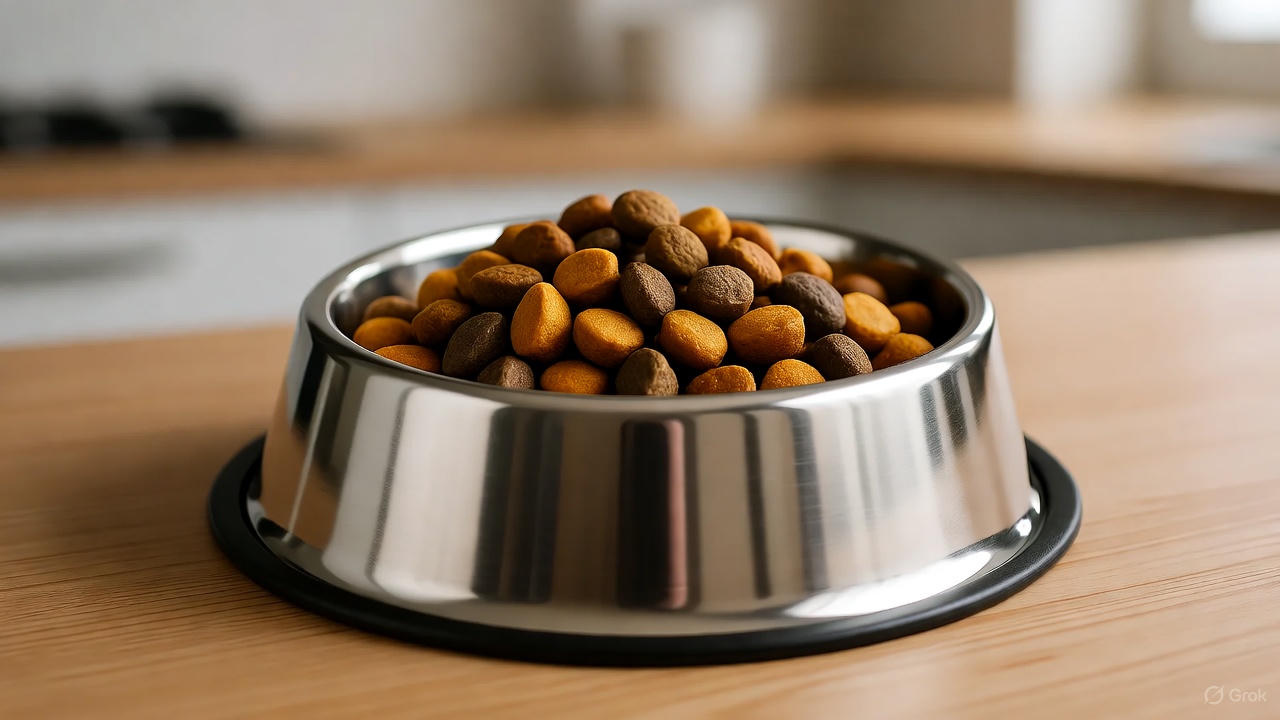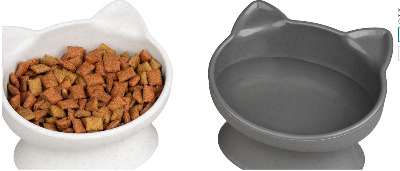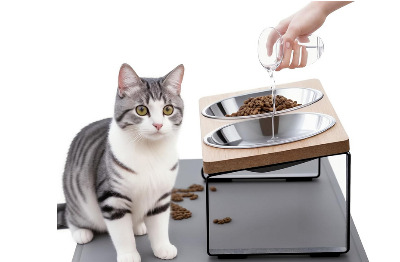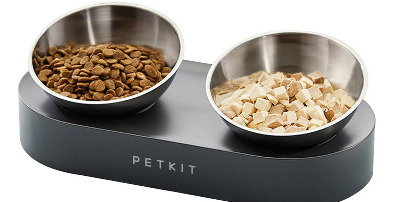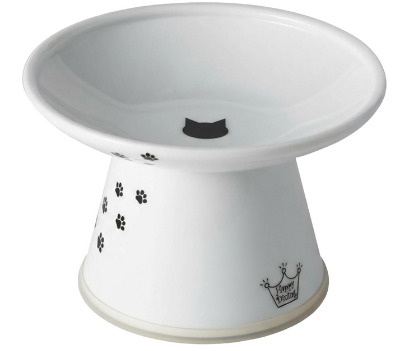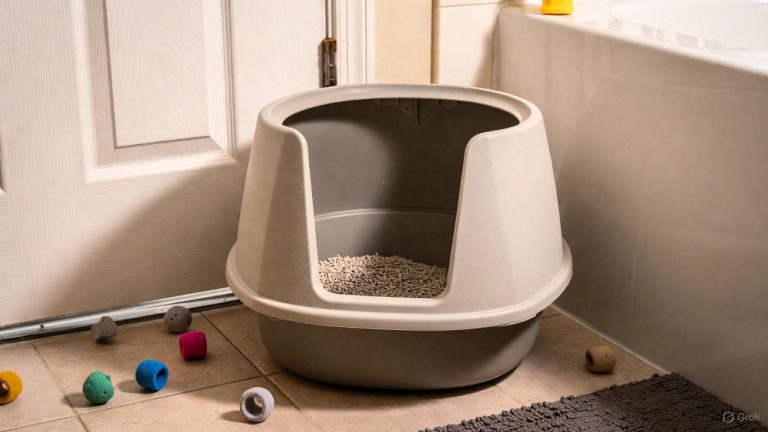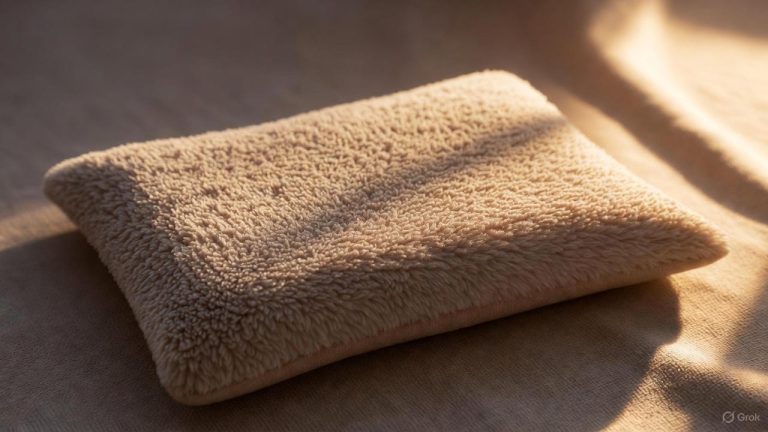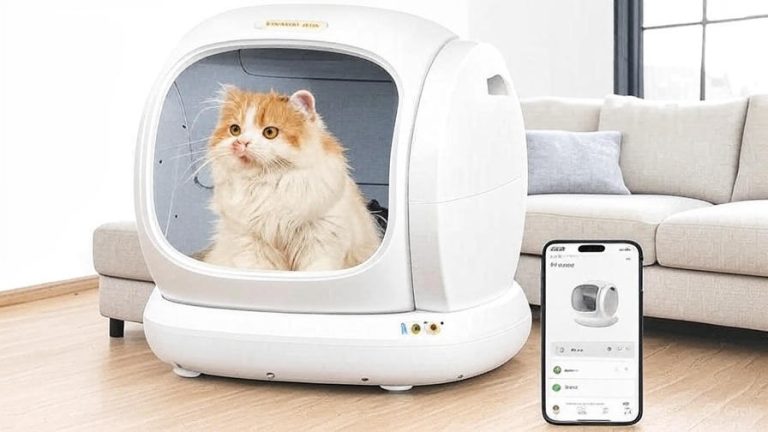5 Best Bowl for Cat Food In 2025
Finding the perfect feeding bowl for your feline companion can dramatically improve their eating experience and overall health. Many cat owners overlook the importance of proper feeding dishes, but the right bowl can reduce digestive issues, prevent whisker fatigue, and make mealtimes more comfortable for your furry friend.
This comprehensive guide explores the top-rated cat food bowls currently available, helping you make an informed decision based on your cat’s specific needs and your household requirements.
Why Elevated and Tilted Bowls Matter
Traditional floor-level bowls force cats to bend their necks unnaturally during feeding time. This awkward posture can create several health concerns that many pet parents don’t realize until problems emerge.
When cats eat from ground-level dishes, their esophagus points downward, making it harder for food to travel smoothly to the stomach. This position increases the likelihood of regurgitation and vomiting, particularly in cats who eat quickly. Senior cats with arthritis find bending down especially painful, which may cause them to eat less and lose weight.
Raised feeding stations position food at a more natural height, allowing your cat to maintain better posture while eating. The elevated design reduces strain on neck muscles, joints, and bones. This ergonomic advantage becomes even more critical as cats age and develop mobility issues.
Tilted bowls take comfort one step further by angling the food toward your cat. This design means less neck bending and easier access to every last morsel. The angle also helps keep food centered in the bowl rather than scattered around the edges.
Whisker stress is another common problem with standard bowls. When a cat’s sensitive whiskers constantly touch the sides of a narrow or deep bowl, it creates discomfort that can make them reluctant to eat. Wide, shallow designs prevent this issue entirely.
Top 5 Cat Food Bowls Reviewed
1. LoeJan Elevated Cat Food Bowl – Best Ceramic Option
Product Description
The LoeJan Elevated Cat Food Bowl features a classic white ceramic design with a built-in tilted angle and raised base. This 5-ounce capacity bowl measures 5 inches in diameter and positions food at an optimal height for comfortable eating. The ceramic construction provides a clean, non-porous surface that resists bacteria better than plastic alternatives.
The bowl’s permanent tilt keeps food naturally centered, preventing it from being pushed over the edges during eating. This single-piece design eliminates joints where food particles could accumulate, making cleanup remarkably simple. The wide, shallow shape specifically addresses whisker fatigue while accommodating flat-faced breeds like Persians and Himalayans.
The elevated portion sits stably on any floor surface without wobbling. The ceramic material can safely go in both the dishwasher and microwave, offering convenience for busy pet parents. The lead-free, cadmium-free construction meets strict safety standards for food-contact surfaces.
Pros:
- Excellent anti-vomiting design reduces regurgitation incidents
- Microwave and dishwasher safe for easy maintenance
- Durable ceramic construction that won’t scratch or harbor bacteria
- Wide opening prevents whisker stress during meals
- Attractive design complements home decor
- One-piece construction has no crevices for food buildup
- Reasonably priced for quality ceramic
- Perfect size for single-cat households
- Heavy enough to prevent tipping but light enough to move easily
Cons:
- Small 5-ounce capacity may not suit free-feeding or multi-cat homes
- Not ideal for holding water due to shallow depth
- Can chip or break if dropped on hard floors
- Single color option limits aesthetic choices
- May be too shallow for cats who prefer deeper dishes
- Some cats need time adjusting to the tilted angle
Best For: Senior cats, flat-faced breeds, cats with frequent vomiting issues, owners who prefer ceramic over metal or plastic.
2. Kitty City Raised Cat Ear Bowls – Best Budget Set
Product Description
The Kitty City Raised Cat Ear Bowls come as a convenient two-pack featuring modern styling in neutral colors. These plastic elevated bowls include cat ear details on the raised base, creating a playful look that doesn’t sacrifice functionality. Each bowl holds 6.5 ounces of food or water, providing adequate capacity for most adult cats.
The oval shape with a slanted front creates a whisker-friendly eating surface. The raised pedestal design reduces neck strain without requiring significant height, making them suitable for kittens through adult cats. The interior features subtle ridges that slow down eating pace, which helps prevent bloating and improves digestion.
Non-skid pads on the bottom keep the bowls firmly in place during meals. The durable plastic construction withstands daily use and survives the top rack of dishwashers. The lightweight design makes them easy to move for cleaning or rearranging feeding stations.
Pros:
- Excellent value with two bowls included
- Slow-feed ridges promote healthier eating habits
- Top-rack dishwasher safe for convenient cleaning
- Lightweight and portable for travel or multiple feeding locations
- Non-slip base prevents sliding during meals
- Cute ear design appeals to cat lovers
- Comes in multiple color combinations
- Durable hard plastic resists breakage from drops
- Perfect starter set for new cat owners
- Suitable for both food and water
Cons:
- Plastic may develop scratches over time that harbor bacteria
- Not as heavy or stable as ceramic or metal options
- Some cats may knock them over during play
- Less elegant appearance compared to ceramic or stainless steel
- Plastic material not recommended for cats prone to chin acne
- Height may not be sufficient for very large cats
Best For: Budget-conscious pet owners, homes with multiple cats needing several bowls, those who want a matching set for food and water.
3. Upgraded Elevated Cat Bowls with Food Mat – Best Complete Set
Product Description
This comprehensive feeding system includes two stainless steel bowls, a wooden tilted stand, and a large silicone food mat. The 15-degree tilt angle has been specifically engineered to reduce neck strain and minimize vomiting episodes. The stand measures approximately 5 inches wide, providing ample space while remaining compact enough for most homes.
The removable stainless steel bowls are dishwasher safe and resistant to rust, scratches, and bacterial growth. Each bowl provides sufficient capacity for a full meal while fitting securely into the wooden base. The natural wood construction adds warmth to your home while offering durability and water resistance.
The included silicone mat measures approximately 19 x 12 inches, creating a protective barrier that catches spills and prevents floor damage. Four anti-skid pads underneath the stand ensure stability even with enthusiastic eaters. The entire setup assembles in minutes without tools.
Pros:
- Complete feeding station with all necessary components
- Food-grade stainless steel bowls prevent bacterial growth
- Large protective mat keeps floors clean from spills
- Natural wood stand adds aesthetic appeal
- 15-degree angle scientifically designed for optimal digestion
- Removable bowls make cleaning effortless
- Dishwasher-safe bowls save time on maintenance
- Anti-slip design prevents movement during meals
- Suitable for both cats and small dogs
- Mat edges contain water and food debris effectively
Cons:
- Wood stand requires hand-washing, not dishwasher safe
- Larger footprint takes up more floor space
- Higher price point than single bowls
- Wood may show wear over time with water exposure
- Assembly required before first use
- Heavier than single bowls, less portable
Best For: Cats with chronic vomiting issues, owners who want an all-in-one solution, homes with hard floors needing spill protection.
4. PETKIT Raised Dog Cat Food Bowl – Best Premium Stainless Steel
Product Description
The PETKIT bowl system features two high-quality 304 stainless steel bowls set into a modern plastic base with adjustable tilt options. You can position each bowl flat or at a 15-degree angle depending on your pet’s preferences. The bowls measure 5.5 inches wide and 2.6 inches deep, accommodating generous portions while preventing overflow.
The rounded edges and wide opening make it easy for cats to reach all their food without whisker contact. The substantial depth holds both dry and wet food effectively. Silicone pads on the bottom prevent the base from sliding across floors or making noise during meals.
The 304 stainless steel construction meets strict veterinary standards for hygiene and safety. This medical-grade material won’t leach chemicals into food and resists scratching that can harbor bacteria. The removable bowls pop out easily for thorough cleaning in the dishwasher.
Pros:
- Premium 304 stainless steel recommended by veterinarians
- Adjustable tilt from 0 to 15 degrees for customization
- Modern design looks sophisticated in any home
- Wider opening prevents whisker fatigue effectively
- Deep enough to contain messy eaters without spills
- Dishwasher safe for convenient maintenance
- Non-slip silicone pads keep station stable
- Rust-free and extremely durable
- Suitable for multiple pets or different meal types
- Removable bowls simplify food prep and cleaning
Cons:
- Higher price compared to basic options
- Some users report thin steel that may develop rust spots over time
- Bowls can rattle in base if not seated properly
- Plastic base may not match aesthetic of premium bowls
- Larger than single-bowl options
- Adjustment mechanism can loosen with repeated use
Best For: Pet parents who prioritize hygiene, cats with sensitive skin or chin acne, those wanting customizable feeding angles.
5. Necoichi Raised Cat Food Bowl – Best Japanese Design
Product Description
Necoichi’s Extra Wide Raised Cat Food Bowl represents Japanese craftsmanship at its finest. This porcelain ceramic bowl measures 6.1 inches wide with only 1.18 inches of depth, creating the ultimate shallow dish for whisker relief. The raised base elevates food to 2.75 inches off the ground, reducing strain on your cat’s neck and back.
The unique curved interior design naturally guides food toward the center, preventing pieces from hiding around the edges. A subtle interior lip helps contain food within the bowl while your cat eats. The extra-wide opening means even the longest whiskers never touch the sides.
This bowl meets FDA standards along with strict European and Japanese safety regulations. The high-quality porcelain is free from lead and cadmium, making it completely safe for daily use. The included removable silicone ring prevents sliding and protects floors from scratches.
Pros:
- Extra-wide 6.1-inch design eliminates whisker fatigue completely
- Japanese quality construction with attention to detail
- Shallow depth perfect for cats who dislike deep bowls
- Curved interior keeps food centered for easy access
- Heavy porcelain resists tipping from pushy eaters
- Interior lip prevents spills during enthusiastic eating
- Dishwasher and microwave safe for convenience
- Meets multiple international safety standards
- Removable non-slip ring protects floors
- Beautiful design enhances home decor
- Ideal for flat-faced breeds and senior cats
Cons:
- Premium pricing reflects Japanese quality
- Porcelain can chip or crack if dropped
- Shallow design not suitable for large food portions
- Single bowl only, sold separately from water bowl
- Heavy weight less convenient for frequent moving
- May be too wide for small feeding spaces
- Some cats need adjustment period to new width
Best For: Cats with severe whisker sensitivity, Persian and Himalayan breeds, owners who value premium aesthetics, senior cats with arthritis.
How to Choose the Right Cat Food Bowl
Consider Your Cat’s Size and Age
Kittens need smaller, shallower bowls positioned lower to the ground. Their developing bodies can’t comfortably reach higher elevations, and oversized bowls may intimidate them. As they grow, gradually transition to adult-sized options.
Adult cats generally do well with standard raised bowls between 2-4 inches in height. The bowl diameter should be at least 5 inches to accommodate their face comfortably. Larger breeds like Maine Coons may prefer even wider options.
Senior cats benefit most from elevated designs that minimize bending. Arthritis makes floor-level eating painful, so investing in a raised bowl can dramatically improve their quality of life. Look for stable bases that won’t tip if your older cat loses balance.
Material Matters for Health and Safety
Stainless steel ranks as the most hygienic option according to veterinarians. The non-porous surface doesn’t harbor bacteria, even with microscopic scratches. It’s also virtually indestructible and dishwasher safe. However, some cats dislike the metallic taste or sound of their tags hitting metal.
Ceramic and porcelain bowls offer excellent hygiene when properly glazed. They’re heavier than plastic, preventing tipping and sliding. The smooth surface cleans easily and doesn’t retain odors. The main drawback is fragility – a dropped ceramic bowl often shatters.
Plastic bowls are affordable and lightweight but come with significant downsides. They scratch easily, creating havens for bacteria that can cause chin acne in cats. Plastic also absorbs odors over time, making it less appealing to your cat’s sensitive nose.
Evaluate Your Cat’s Eating Habits
Fast eaters who gulp their food benefit from slow-feed designs with interior ridges or maze patterns. These features force cats to eat more slowly, reducing vomiting and bloating. However, some cats find these designs frustrating.
Messy eaters need bowls with higher sides or interior lips that contain food better. Tilted designs also help by keeping food naturally centered. Pairing the bowl with a large food mat catches inevitable spills.
Picky eaters often prefer specific materials or shapes. Some cats refuse to eat from bowls that let their whiskers touch the sides. Others dislike certain materials or colors. Be prepared to experiment to find what your cat prefers.
Space and Aesthetic Considerations
Small apartments or homes with limited floor space do better with compact single bowls rather than elaborate feeding stations. Wall-mounted options exist for extreme space constraints.
Multi-cat households need to calculate total feeding area carefully. Cats typically prefer eating several feet apart to avoid resource competition. Budget both space and your wallet for multiple bowl setups.
Your home’s decor matters too. Premium ceramic and wood options blend beautifully with modern interiors. Bright plastic bowls may look playful in a casual kitchen but clash with elegant dining areas.
Maintenance Requirements
Daily washing prevents bacterial growth and keeps food fresh-tasting. Dishwasher-safe bowls save significant time, especially in multi-cat homes. Check whether the entire unit is dishwasher safe or just certain components.
Stainless steel and glazed ceramic require minimal maintenance beyond regular washing. Wood stands need occasional treatment with food-safe oil to prevent drying and cracking. Plastic bowls should be replaced every few months as scratches accumulate.
Consider how easy the bowl is to clean thoroughly. Single-piece designs have fewer crevices where food hides. Removable bowls from elevated stands clean more easily than fixed designs.
Common Cat Bowl Problems and Solutions
Whisker Fatigue
This condition occurs when a cat’s sensitive whiskers repeatedly brush against bowl sides during eating. Symptoms include reluctance to finish meals, pawing food out of the bowl, or acting hungry but not eating.
Solution: Switch to wide, shallow bowls at least 5-6 inches in diameter. The extra width lets your cat eat without any whisker contact with sides. Many cats show immediate improvement with this simple change.
Frequent Vomiting After Meals
When cats eat from floor-level bowls, gravity works against proper digestion. Food travels straight down without following the natural curve of the esophagus, often resulting in regurgitation shortly after eating.
Solution: Elevated bowls positioned 3-4 inches off the ground dramatically reduce vomiting episodes. The raised height aligns the esophagus properly, allowing food to flow smoothly into the stomach. Tilted designs provide even better results.
Chin Acne and Skin Irritation
Bacteria trapped in scratched plastic bowls is the primary culprit behind feline chin acne. The condition appears as blackheads or crusty spots on the chin and can become infected without treatment.
Solution: Replace plastic bowls with stainless steel or ceramic alternatives. These non-porous materials don’t harbor bacteria. Clean bowls daily and consider separate bowls for each cat to prevent bacteria spread.
Food Pushed Out of Bowl
Some cats use their paws to scoop food or push it around excessively. Others simply eat with enthusiasm that sends kibble flying. This messy behavior wastes food and creates floor cleanup hassles.
Solution: Bowls with interior lips or tilted designs keep food naturally centered and contained. A large silicone mat underneath catches scattered pieces. For extreme cases, puzzle feeders or slow-feed bowls channel the pawing instinct productively.
Bowl Sliding Across Floor
Lightweight bowls, especially plastic ones, slide during eating. This movement frustrates cats and can make them reluctant to finish meals. Hard floors and enthusiastic eaters worsen the problem.
Solution: Look for bowls with rubber or silicone non-slip bases. Heavier ceramic or stainless steel options naturally resist sliding better than plastic. Placing bowls on textured mats adds friction that prevents movement.
Caring for Your Cat’s Feeding Bowls
Daily Maintenance
Rinse bowls after each meal to prevent food residue from drying and hardening. Dried wet food becomes difficult to remove and creates bacterial growth. For dry food, at least empty crumbs daily even if you don’t wash the bowl.
Wash food bowls with hot soapy water at least once daily. Use a separate sponge designated for pet dishes to avoid cross-contamination with human dishes. Scrub thoroughly around any ridges, corners, or seams where food hides.
Water bowls need daily washing too. Bacteria multiply rapidly in standing water, creating a biofilm even in seemingly clean bowls. Fresh water in a clean bowl keeps your cat hydrated and healthy.
Deep Cleaning Schedule
Once weekly, sanitize bowls to eliminate all bacteria. Run dishwasher-safe bowls through a hot cycle. For hand-wash-only items, soak in a solution of 1 tablespoon bleach per gallon of water for 10 minutes, then rinse thoroughly.
Inspect bowls regularly for scratches, chips, or cracks. These imperfections harbor bacteria that regular washing can’t eliminate. Replace damaged bowls immediately to maintain hygiene standards.
Wood stands require special care to prevent water damage. Wipe spills immediately and allow stands to dry completely between uses. Reapply food-safe mineral oil every few months to maintain water resistance.
Storage Best Practices
Store clean, dry bowls in a cabinet or designated area away from floor-level dirt and pet hair. Never stack wet bowls, as trapped moisture breeds bacteria.
Keep extra bowls on hand for rotation. This allows thorough drying between uses and provides backups during dishwasher cycles. Having spares also helps during illness – you can immediately replace a bowl used by a sick cat.
Making the Switch to a New Bowl
Cats can be notoriously resistant to change, including new feeding bowls. A gradual transition helps ensure your cat accepts the new setup without stress.
Start by placing the new bowl next to the old one during feeding time. Fill both bowls so your cat can choose. Most cats will investigate the new option out of curiosity while having the security of their familiar bowl nearby.
After a few days, put slightly more food in the new bowl and less in the old one. This gently encourages your cat to use the new bowl without forcing the issue. Praise and treats after using the new bowl create positive associations.
Once your cat regularly eats from the new bowl, remove the old one completely. Keep the old bowl accessible for a few days in case your cat needs the security of knowing it’s available.
Some cats adapt immediately to elevated or tilted bowls because the improved comfort is instantly noticeable. Others need several days to adjust to the different eating position. Be patient and don’t force the transition.
For extremely resistant cats, try rubbing a small amount of wet food or treat paste around the rim of the new bowl. The enticing smell often overcomes their reluctance to try something new.
Special Considerations for Multi-Cat Households
Feeding multiple cats requires careful planning to prevent resource guarding and ensure each cat gets adequate nutrition. The right bowl setup can reduce stress and competition.
Provide at least one bowl per cat, plus one extra. This abundance prevents competition and gives each cat options. Space bowls several feet apart so cats can eat without feeling crowded or threatened.
Consider feeding stations in separate rooms for cats with food aggression issues. Physical separation eliminates conflict and allows nervous cats to eat in peace. Close doors during meals if necessary.
Elevated bowls work well in multi-cat homes because they’re harder to steal from than floor-level bowls. The height creates a natural barrier that makes sneaking food more difficult. However, ensure all bowls are at similar heights so no cat has an unfair advantage.
Some cats prefer eating at different times. Offering multiple feeding locations lets your cats establish their own schedules naturally. You might notice certain cats preferring particular spots or times.
Monitor each cat’s consumption carefully in multi-cat households. Some cats eat faster or more aggressively, potentially preventing others from getting their fair share. Separate feeding may become necessary if one cat consistently interferes with others.
Final Thoughts
Investing in the right cat food bowl goes far beyond aesthetics – it directly impacts your cat’s health, comfort, and eating enjoyment. The five bowls reviewed here represent the best options currently available, each excelling in different categories.
For budget-conscious owners, the Kitty City Raised Cat Ear Bowls deliver impressive functionality at an affordable price. The two-pack provides excellent value while addressing whisker fatigue and neck strain.
Owners dealing with frequent vomiting should seriously consider the Upgraded Elevated Cat Bowls set with its scientifically designed 15-degree tilt and protective mat. The complete system addresses multiple issues simultaneously.
Those who prioritize hygiene and durability will appreciate the PETKIT Raised Dog Cat Food Bowl’s premium stainless steel construction. The adjustable tilt and veterinarian-recommended materials justify the higher investment.
Cat lovers who want the absolute best whisker-friendly design should choose the Necoichi Raised Cat Food Bowl. The extra-wide Japanese craftsmanship solves whisker fatigue completely while offering stunning aesthetics.
The LoeJan Elevated Cat Food Bowl strikes an excellent balance between quality ceramic construction, effective anti-vomiting design, and reasonable pricing. It’s the versatile choice that works well for most cats.
Remember that the “best” bowl depends entirely on your specific situation. Consider your cat’s age, size, eating habits, and any health issues when making your selection. Don’t hesitate to try different options until you find the perfect match.
Your cat spends several minutes each day eating from their bowl. Making those moments comfortable, stress-free, and healthy improves their quality of life in ways that extend far beyond mealtimes. The right bowl is an investment in your cat’s wellbeing that pays dividends every single day.
Take time to observe how your cat eats from their current bowl. Do they seem uncomfortable bending down? Do they leave food in the bowl’s corners? Does their chin show signs of irritation? These observations guide you toward the solution that will make the biggest difference.
With the information in this guide, you’re now equipped to make an informed decision about upgrading your cat’s feeding experience. Your feline friend may not be able to thank you in words, but their improved eating habits and better health will speak volumes.

